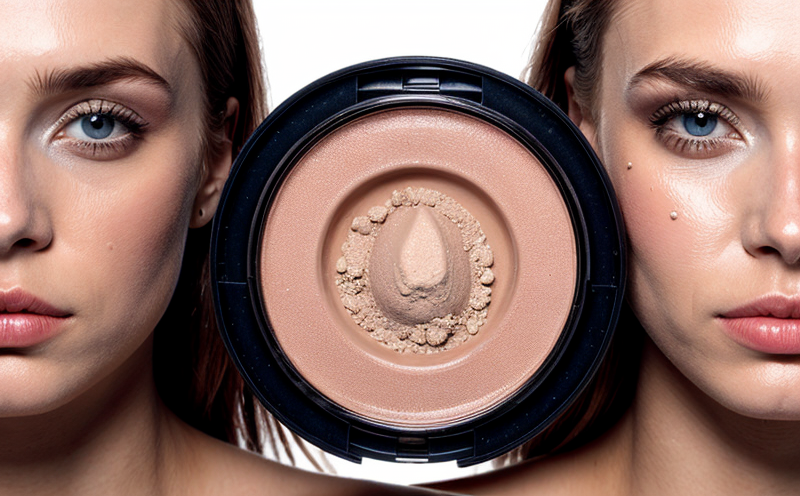Nickel Content Testing in Cosmetic Products
In recent years, nickel content testing has emerged as a critical component of cosmetic product quality assurance. Nickel is a common metal used in various cosmetic products such as jewelry, accessories, packaging, and even pigments. However, excessive nickel levels can pose significant health risks, particularly for individuals who have contact dermatitis or sensitivity to nickel.
The European Union's Cosmetics Regulation (EC 1272/2006) requires that cosmetic products be free from prohibited substances, including nickel, if they are in direct contact with the skin. Nickel is also regulated under other global standards such as ISO 21978 and ASTM F2338.
Our laboratory provides comprehensive testing services to ensure that your cosmetic products comply with these regulations. We utilize advanced analytical techniques like Inductively Coupled Plasma Mass Spectrometry (ICP-MS) which allows for precise detection of nickel at very low levels. Our team of experts can help you understand the potential risks associated with nickel exposure and provide recommendations on how to mitigate them.
The testing process begins with thorough sampling and preparation of the product. This involves extracting nickel from the sample using appropriate solvents before analysis. Afterward, we use ICP-MS technology to measure the concentration of nickel in parts per million (ppm). The results are then reported back to you along with recommendations for any necessary adjustments.
Our laboratory adheres strictly to international standards such as ISO 21978 and ASTM F2338 when performing these tests. These guidelines provide a framework for ensuring accurate and consistent testing across different laboratories worldwide. By following these protocols, we ensure that our results are reliable and can be trusted by regulatory bodies.
- Compliance with EU Cosmetics Regulation (EC 1272/2006)
- Adherence to ISO 21978
- Followance of ASTM F2338
Why It Matters
The importance of nickel content testing in cosmetic products cannot be overstated. Not only does it help protect consumers from potential health hazards, but it also ensures that your brand maintains its reputation for quality and safety.
Avoiding nickel contamination is crucial because even small amounts can trigger allergic reactions in sensitive individuals. According to a study published in the Journal of Allergy and Clinical Immunology (JACI), approximately 17% of women aged between 18-30 years old suffer from nickel allergy. This statistic underscores why rigorous testing protocols are essential for any cosmetic company.
From an operational perspective, non-compliance can lead to costly recalls and damage to brand image. Regulatory authorities like the European Chemicals Agency (ECHA) have imposed stricter rules on nickel content in cosmetics due to increasing awareness about its dangers. Therefore, investing in proper testing procedures early on is not just advisable but necessary.
Moreover, meeting regulatory requirements can open up new market opportunities domestically and internationally. Many countries outside the EU also enforce similar standards for nickel-free cosmetic products, making compliance a global necessity rather than an option.
Benefits
By incorporating nickel content testing into your quality control process, you stand to gain numerous advantages:
- Consumer Trust: Demonstrating commitment to consumer safety enhances brand loyalty and trust.
- Market Access: Compliance ensures access to international markets where stringent regulations apply.
- Risk Mitigation: Early detection of nickel contamination allows for corrective actions, reducing the risk of recalls or legal action.
- Reputation Enhancement: A reputation for high standards attracts more customers and enhances your brand's image.
Competitive Advantage and Market Impact
In today’s competitive market, standing out requires more than just producing good products; it involves ensuring that those products meet the highest standards of safety and quality. Nickel content testing plays a pivotal role in achieving this goal.
According to industry reports, consumers are increasingly demanding transparency about ingredient lists and production processes. Brands that can demonstrate compliance with stringent nickel-free requirements not only appeal to health-conscious customers but also differentiate themselves from competitors who may lack such rigorous controls.
- Innovation: By staying ahead of regulatory changes, companies position themselves as leaders in innovation within their industry.
- Prestige: Premium brands often emphasize the absence of nickel to underscore their premium positioning and superior craftsmanship.
- Sustainability: Offering nickel-free options aligns with broader sustainability trends among consumers who prioritize eco-friendly practices.





